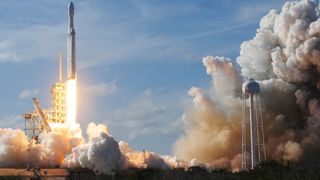Executive summary
The space sector is undergoing rapid geostrategic, technological and industrial change and will be critical to Australian national security and economic growth in coming decades.
New actors, like private commercial enterprises, are driving novel technologies and industries in space. The unshackling of the space industry from largely government-derived sources of revenue has helped accelerate this growth. Government space programs and agencies are commissioning more services and products from the commercial space industry, while continuing to focus on high-risk scientific missions. As more nations have invested in modernising their military forces and as access to sophisticated space capabilities has become cheaper, the spectre of accidental and deliberate conflict in space is rising.
Australia and the United States have a growing confluence of interests in space:
- Australia is setting up its first space agency with the goal of developing its civil and commercial space sectors.
- The United States, under increasing pressure from competitors, is showing a greater interest in allies becoming more space capable.
- Australia’s close relationship with the United States, as the world’s largest space economy, is a strategic asset that can be leveraged through a whole-of-government strategy on space and space cooperation with Washington.
- The dominance of the United States in space is under question. Allies like Australia can help to mitigate vulnerabilities by providing better space situational awareness (SSA), diversifying existing capabilities, and supporting diplomatic efforts to establish international agreements on safe and responsible space behaviour.
Australia’s new space agency should consider establishing projects with the United States that help build-out Australia’s domestic space industry and align with US strategic goals. Australia should:
- Co-develop an advanced space situational awareness network with both national security and commercial applications.
- Establish a competitive small satellite program using US launch capabilities, focusing on innovative small and medium enterprises.
- Aim to establish a joint innovation centre that would focus on space capabilities and industry.
Introduction
The space domain is currently undergoing rapid technological, industrial and geostrategic change. Owing to the proliferation of satellite, launch and associated technologies, space is becoming more accessible to a wide range of countries, universities and companies. New actors, particularly private enterprises, are encroaching on an arena that has traditionally been dominated by governments, and are using space to develop innovative industries like near-real time satellite imagery and space tourism. At the same time, many nations are advancing their military capabilities in space, challenging norms of behaviour that have shaped relations in this domain since the late- 1950s.
In light of these changes, Australia has reached a bipartisan consensus that space — and space industry — will be an increasingly attractive economic opportunity and important element of national security. The difficult question for policymakers is how Australia should develop globally competitive capabilities without expensive and unsustainable government support. Australia’s close relationship with the United States is a strategic advantage that Australia should use fully in developing its space industry. Australia’s already close cooperation with the United States in national security space activities, America’s large and diverse space industry and venture capital market, and Australia’s stock of niche space expertise should be leveraged as Canberra sets up its space agency.
Australia’s already close cooperation with the United States in national security space activities, America’s large and diverse space industry and venture capital market, and Australia’s stock of niche space expertise should be leveraged as Canberra sets up its space agency.
A growing confluence of interests between Washington and Canberra underscores the need to make collective progress in space. Australia needs assistance in developing its civil and commercial space program, while the United States has a growing interest in its allies becoming more space capable. In particular, Washington is interested in the contributions allies can make in improving the resilience of US space systems. A country like Australia can assist in this task by increasing the geographical reach of space surveillance, contributing to a plurality of voices to shape norms of space behaviour, adding diversity to space systems, and providing niche areas of innovation.
Australia already cooperates closely with the United States in military space activities and invests up to AUD$1 billion annually in shared, space-related, national security capabilities. Yet, military space cooperation has not translated to deep linkages in civil space areas. This is partly due to Australia’s lack of a properly implemented, whole-of-government strategy on space and space cooperation with the United States. The government’s newly minted Australian space agency is an opportunity to formulate such a strategy. Owing to historical factors, geography and recent investment, Australia is developing niche expertise in space situational awareness and earth observation, two areas where the United States is looking to deepen collaboration with allies.
An Australian space agency is the sine qua non of further commercial space development in Australia. Nevertheless, more extensive civilian cooperation with the United States will not be without challenges. A strategy for closer bilateral engagement must ensure that civilian space cooperation is not completely subordinated to more established and better-resourced bilateral national security space cooperation. It must also protect the innovative mindset of Australian companies from the ‘big budget’ culture of some US space organisations, while addressing practical challenges to day-to-day cooperation such as export control restrictions that stifle information sharing and potential concerns on the Australian side of ‘entrapment’ in US military policy. Addressing these challenges while broadening Australia’s strong space relationship with the United States across the military, civil and commercial domains should be a key priority of Australia’s new space agency.
Space today: More valuable, more commercial, more competitive
In the last five years, the global space sector has been rekindled with a dynamism that has long been absent. New money, new participants and new technology have lowered barriers to entry and increased competition. One way of better understanding the range of space activity today is through the three categories of: national security, civil and commercial space activities.
National security space
National security space activities refer to those of militaries and intelligence organisations. These include secure communications, surveillance and reconnaissance, signals intelligence and ground-based space monitoring. Increasingly, governments are adding counter-space tools to their military capabilities, such as anti-satellite missiles and cyber forces as well as ground-based signal jamming.12
There is growing concern regarding the militarisation of space. Space forces are becoming a more routine part of warfighting doctrines, and an increasingly permissible target during a potential conflict.3 Some states are challenging the norms that were built during the Cold War, in which early warning systems and missile launch detection satellites helped to bolster strategic stability, and where anti-satellite weapons were deployed in limited numbers.4 Today, however, the perceived overreliance on space communication and networking by Western militaries is regarded by adversaries as an Achilles heel to be exploited, driving the United States and others to prepare for the potential of conflict spreading to space.5 In a worst-case scenario, if an adversary was to render US space assets unusable, the United States would experience a marked diminution of capabilities and be forced to wage what some have termed “industrial era” warfare.6
There is growing concern regarding the militarisation of space. Space forces are becoming a more routine part of warfighting doctrines, and an increasingly permissible target during a potential conflict.
This is highly relevant to Australia as US allies share the benefits of many of Washington’s space systems. For example, Australia is a partner in the US-developed “Wideband Global SATCOM” satellite communications system, with access to the full capabilities of the multi-satellite constellation as a function of the decision to fund one of the satellites.7 The Wideband Global SATCOM provides joint communications between Australia and other allied partners, as well as command, control and communication for Australian forces overseas.8 On top of military benefits, Australian intelligence gathering relies in part on information collected by US satellites.9 Allied countries can contribute to the quality and reach of cooperative space systems, providing satellites or payloads that augment US systems and improve space architecture. The trend towards more sophisticated space capabilities at lower prices makes this more realistic than it was in the previous era of space competition between superpowers. Non-financial contributions from allies are also important in this respect and can range from hosting space surveillance telescopes and ground communication stations, to participating in international debates on ‘rules of the road’ for space.
Civil space
Civil space activities can be loosely defined as non-military, government-sponsored space efforts led by organisations like NASA and the European Space Agency. The efforts of such agencies include: stand-out activities like interplanetary exploration through, for example, the Mars rovers Spirit and Opportunity; the research and construction program of the International Space Station; and the global network of Earth imaging satellites which feed essential climate and weather data to terrestrial analysts. Mid-scale civil space programs similar to the one being contemplated by Australia have been able to develop remote sensing satellites — such as Canada’s RADARsat — and contribute systems to international science missions — such as the United Kingdom’s Broadband Radiometer on the forthcoming EarthCARE satellite.10
Figure 1: Number of satellites launched, and countries launching them
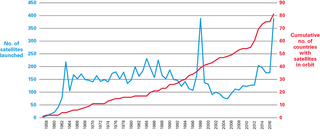
Although the overall goals of civil space programs have changed little over the past decade, the way these goals are achieved has undergone a fundamental shift. Governments today initiate fewer one-off, cutting-edge projects that develop new space hardware at massive cost, and instead purchase more ‘off-the-shelf’ commercial services. The growth in private capabilities has led traditional civil space organisations to purchase more services from the commercial sector. For example, NASA now regularly launches space station resupply missions with commercial providers such as SpaceX and Orbital Sciences Corporation. Delegating more to the commercial sector has allowed civil space agencies to focus their efforts on high-risk R&D projects where commercial industry does not see an economic return.
Commercial space
Whereas civil space initiatives are primarily led by government organisations, commercial space activities are those where the government is not the primary customer. In commercial space, end-customers extend beyond traditional government space agencies to a host of other government and non-government actors. This is an important distinction because it unshackles the growth of the space industry from purely government space budgets. Space-enabled services like satellite television and radio, remote-area satellite phones, or GPS receivers in smartphones target many more customers than governments alone, and as a consequence have driven industry growth. In recent years, commercial space has expanded even further into areas previously the domain of government and civil projects, including launch, science, human spaceflight and commercial exploration.
The growth in commercial space is supported by fundamental industry trends. Building and launching satellites has become much cheaper11 which has led to growth in existing space applications and lowered barriers to entry for experimental businesses in space-based manufacturing,12 computing13 and pharmacology.14 New businesses in fringe areas like space tourism and mining are gaining credibility and financial support; and their early prototypes are injecting new sources of funding into the industry, even if their businesses are ultimately unsuccessful. Service industries are emerging to support the growing sector, including space ‘traffic management,’ on-orbit refuelling and repair for valuable satellites, and imagery storage and interpretation.
The decoupling of the space industry from government-led investment has also presaged growing private investment in the industry. For example, the industry as a whole is worth about AU$430 billion per year15 and has more than doubled since 200816 as satellite TV and GPS applications have become mainstream. Growth is forecast into the future as well at 5-7 per cent per annum, creating a AU$1-2 trillion dollar industry by 2040.17 Globally, serious money is being invested in space-related industries. In 2016 Seraphim Capital was established in the United Kingdom, the world’s first venture capital fund solely focused on the space industry with AU$180 million under management.18 Seraphim presents an interesting example for Australia’s budding commercial space industry insofar as it is a partnership between government and private capital, with funders including the UK Space Agency and European Regional Development Fund as well as Airbus and Rolls Royce.19 Japan recently announced a similar public-private partnership venture capital fund focusing on space, with a projected AU$1.2 billion of funds.20 Taken together, this level of private investment is the harbinger of renewed growth, innovation and commercial activity in space.
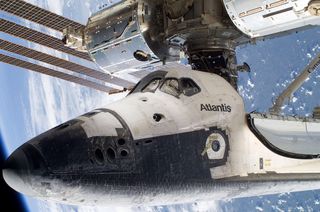
The interdependence of space activities
While each enterprise is distinct, national security, civil and commercial space activities are also interdependent, with the trends in one area impacting on the others. For instance, the low barriers to satellite launch driving commercial industry has led to more crowded orbits, making it increasingly challenging to manage national security, civil and commercial space activities. The scale of this task cannot be underestimated. There are now more than 20,000 space objects being tracked,21 about 1,200 of which are operational satellites with a further 2,000 satellites forecast for launch over the next five years. More than 60 countries are associated with these satellites in orbit, alongside many companies and universities, due to the proliferation of low-cost launch and missile technology.22 This dynamic is driving international efforts to promote a safe and more stable space environment through international rules on space activities.23 Existing efforts include establishing cooperative arrangements to bolster space monitoring and transparency as well as supplementing international treaties that manage the use of space between countries.24
The industries that support the different areas of space activities are also interconnected and depend on a variety of dual-use technology that can be applied to national security and civilian uses. Dual-use technology is common in space, where the same imaging satellite used to identify insurgents can be used to measure deforestation or track the speed and location of oil tankers. Moreover, these applications all share the same industrial base and travel to space on the same launch vehicles, some of which can be used to launch military-focused hardware. SpaceX, a pin-up for the commercial space industry, is one example of this interdependence: in 2017, only 55 per cent of its payloads were commercial, with the remainder a mix of civil (33 per cent) and national security (11 per cent) launches.25 In the civil and commercial sectors of the space industry, there is also significant overlap. As civil space organisations like NASA come under pressure to build fewer bespoke satellites and equipment they will rely more heavily on the commercial space industry, buying more off the shelf products and mass-produced satellites.26
Space: What is it good for? |
|
Position, navigation and timing (Civil, National Security, Commercial) Almost every smart phone, ship and aircraft is plugged into a space-based network that gives exact positioning information. GPS is the oldest and best known of these, but similar systems have been developed by Russia, China, the European Union, India and Japan on the back of fears of overreliance on US technology or the preference for adaptation to local conditions. This technology has been described as “twenty-first century infrastructure”, and helps to drive productivity in agriculture, mining, and transportation, as well as synchronising global banking transactions and enabling precision targeting for munitions. |
|
Satellite observations (Civil, National Security, Commercial) Satellites provide a unique vantage point to take images of Earth. These span from relatively easily interpreted ‘photos’ in the visual part of the spectrum, to increasingly sophisticated imagery which uses other parts of the radio frequency spectrum (e.g. infra-red or ultra-violet) or actively ‘pings’ the surface of the Earth with laser or radar. Commercial satellites can deliver high-resolution imagery that can reveal newspaper-sized objects or wide-angle imagery like weather images which show cloud patterns across the whole disc of the Earth. Importantly for military applications, images can be taken over any part of the globe without permission. |
|
Satellite communications and media (National Security, Commercial) Satellites provide indispensable communication links particularly where other communications solutions fail, such as satellite phones or satellite broadband in remote areas. Satellites also provide broadcasting services direct to consumers, including satellite television and radio. From a military perspective, satellites provide relatively secure communication channels for control and communication with air, sea and ground forces. |
|
Signals intelligence (National Security) Satellites can be used to ‘eavesdrop’ on radio-based communications across the globe. These types of satellites are largely confined to the military, though civilian analogues exist (like satellites that track ships by monitoring ship-tracking radio bursts). |
|
Space science and exploration (Civil) Exploration and science are synonymous with space. From Mars rovers and spacewalking astronauts to Pluto fly-bys, space science and exploration involves sending robots and people into space. Major motivations for this activity include research, building national prestige, and to expand an industrial base required for more prosaic civil or national security space applications. |
Enabling technologies |
|
These are not useful in themselves, but are essential enablers for the space applications above to occur. |
|
Launch Space launch is an essential sector. All space applications require some hardware to be launched into space. This capital-intensive and high-risk sector has been shaken up in recent years by a series of new entrants, of which SpaceX is the best known. Competition and new technologies have driven costs down. |
|
Ground communication Ground communication means the ‘dishes’ and associated systems on the ground, which are used to send commands to spacecraft and receive data back. Australia’s wide, remote and radio-quiet geography has meant this has historically been a stand-out strength. Traditional methods of communication may change in the next decades as vastly increased data transfer requirements and commercial pressures to use less radio spectrum result in satellites using laser-based in-space communication links more and space-ground links less. |
|
Space situational awareness Space situational awareness (“SSA”) refers to global networks of ground and space-based sensors that track where space objects are. Used in a national security context to track foreign satellites, and in a civilian context to predict and avoid collisions with active satellites and orbiting debris (‘space junk’). Australia hosts space situational awareness sensors at its Joint Defence Facilities with the United States, and also in civilian settings.[27] |
Australia and space: Chequered and uneven
Australia has a chequered civil and commercial space history. Australia was the third country to launch a national satellite into orbit from its own territory in 1967.28 Since then, the country has developed niche areas of strength, but has lacked a sustained, coordinated and clearly articulated national space strategy despite occasional flashes of enthusiasm.29
The most serious civilian space effort in recent decades was the Australian Space Office under the Hawke and Keating governments, which was linked to ultimately unviable space launch facilities in Cape York and Christmas Island, and disbanded shortly after the Howard government took office. Since then, a cooperative government research centre for satellite systems was established in 1998 which launched a medium-sized satellite to celebrate federation called “FEDSAT” in 2002. FEDSAT ended its life as an Australian Defence Department satellite after funding for the cooperative research centre expired. More recently, under the Rudd and Gillard governments an Australian Space Research Program was implemented, and a national space policy was drafted modestly entitled “Australia’s Satellite Utilisation Policy”.30 Although these initiatives superficially appear to be a record of achievement, the lack of strategic focus has left Australia behind its peers. In the same period the United Kingdom established an AU$8.8 billion space industry, a national space agency and successful commercial businesses that pioneered the now-ubiquitous small satellite, Canada developed a niche competency in in-space robotics, visible today as the maple leaf on the International Space Station’s robotic arm, and New Zealand developed its own domestic launch capability.31
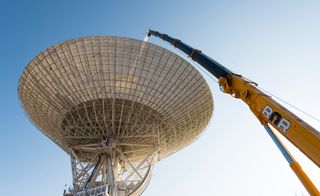
The government’s historically hands-off approach to civilian space appears to be changing, and a more bipartisan approach is now taking shape. In 2017, Simon Birmingham, the Minister for Education and Training, announced the government’s plan to establish a space agency with broad-based support. This was closely followed by Senator Kim Carr’s release of a Labor space policy platform32 underlining unprecedented bipartisan support for the space agency. Both sides of politics view Australia’s goals in space as focusing on jobs, economic growth and the commercial space industry. In the 2018 federal budget, $41 million has been allocated to the space agency over the next four years to draft an investment plan, invigorate industry and begin forging international agreements.
Besides focusing on efforts to grow Australia’s commercial space industry, the agency will help form a coordinated national space strategy. Currently, Australia’s civil space expertise is spread across a range of federal organisations, most prominently CSIRO, Geoscience Australia, and the Bureau of Meteorology. Overall responsibility for civil space strategy sits with the Department of Industry, Innovation and Science. Further space capability exists in Australia’s private and university sectors. For example, Optus has run a long and successful satellite communications business with ground facilities in Sydney’s suburbs, and there are at least 56 different university affiliated programs involved in space research.33 One role of Australia’s future space agency will be to coordinate the diverse set of expertise spread across the government, university and private sectors.
Across these different centres of capability some consistent threads of niche expertise stand out. Leveraging its advantageous geographic position,34 Australia has developed national strengths in ground communication facilities like the Deep Space Communications Complex near Canberra35 and in the emerging field of space situational awareness, exemplified by the debris tracking facility run by Electro Optic Systems.36 Australia’s large land area and sparse population has also generated demand for cost-effective environmental monitoring and wireless communications, spurring development of expertise in satellite technologies, particularly in Earth observation, positioning and communications.37
National security
National security considerations have underpinned Australia’s space involvement from the outset, with Australia’s first satellite named after the Weapons Research Establishment, a forerunner to today’s Defence Science and Technology Group. Since then, geography and the alliance with the United States have shaped the evolution of national security space in Australia. For example, the now-pervasive GPS began life as a military system and Australia’s unique geographic location in the Southern Hemisphere provided Canberra with a central role in testing its performance.38 Nevertheless, Australia’s defence establishment has typically been described as an “informed consumer” of space products and services, rather than an innovator or producer.39
There are growing arguments for Australia to increase the space capability of the Australian Defence Force (ADF) and Australia’s broader space industrial base.40 The ADF relies on space for a variety of communication and networking capabilities that allow it to coordinate military forces over vast distances. Space permits the ADF to operate its naval, air and land forces in a ‘joint’ manner, for instance, allowing Australia’s new F-35s to synchronise and communicate with forces on the ground. More specifically, space and satellites are used to distribute intelligence, provide precision timing and navigation using GPS, and provide other specialised services like meteorology.41 This is acknowledged in the 2013 edition of the Royal Australian Air Force’s Air Power Manual, which states “many of the capabilities employed by the ADF depend on space-derived services for their effectiveness”.42 With modern military forces so reliant on space for their operation, and assets in space under increasing threat, the motivation for Australia to establish more ‘sovereign’ space industrial capability to support its national security interests has also grown.43
With modern military forces so reliant on space for their operation, and assets in space under increasing threat, the motivation for Australia to establish more ‘sovereign’ space industrial capability to support its national security interests has also grown.
The growing importance of space to Australia’s national security can also be evidenced by the amount of government investment. A recent report from Bryce Space and Technology, a specialist space consultancy, estimated that the “Australian Defence Ministry spends up to $1 billion [per annum] on space related activities”.44 Other than systems and capabilities specific to the ADF, Canberra has made continued investments in strategic capabilities that utilise space, almost always in conjunction with the United States. Particular focus areas include satellite communications and intelligence gathering at US-Australia joint facilities like those at Pine Gap. Former Defence Minister and US Ambassador Kim Beazley recently described Pine Gap as “arguably the most significant American intelligence-gathering facility outside the United States”.45 The facility provides Australia with access to intelligence and early warning on terrorist activities, proliferation of weapons of mass destruction and regional military developments.46 The work and effectiveness of the facility is sensitive, but a major function of the site has been reported to be communication with space-based intelligence and communication satellites.47
Australia has also been building new strengths in the national security applications of space technology beyond signals intelligence and communication. Satellite imagery analysis is set to be advanced by an additional AU$500 million from the Australian Geospatial Organisation over the next decade.48 Space situational awareness is another focus area. Australia has recently installed a Space Surveillance Telescope — originally a Defence Advanced Research Projects Agency (DARPA) project49 — in Western Australia, and has plans for additional SSA installations in Australia.50 More broadly, the Defence Science and Technology Group have active research programs on small satellites and hypersonics51 as well as new forms of space sensors and imaging.52
What would Australia need to spend on space
A commitment to the space industry does not require large government investments in the short term, and this is reflected in Australia’s allocation of $41 million over four years to the space industry in the 2018 budget. Standing up a space agency designed for longevity and staffing it with an experienced and qualified team is more important than raw dollars in announcing to the global space community that Australian industry is serious. The development of a sound, long-term strategy is also crucial. None of this requires significant financial spending in the short term, but it does require forward planning and a consistent strategy to invest small amounts now in future growth areas. These may include space applications of the robotics, biomedical and computing industries.53
In the longer term, Australia could spend more should the returns from space sector investment justify it. Australia’s GDP and comparisons with commercially-focused international space agencies would indicate a ‘full potential’ space budget of up to AU$200 million (see figure 2). It would be unwise to allocate such a large budget immediately as it would distort the Australian space industry and likely be poorly spent in the crucial first years. Longer term, it represents a meaningful upper bound on Australia’s space contribution. Without at least some government spending as an ‘anchor customer’ and technology pioneer, Australia will be disadvantaged versus its international competitors, even in areas of niche capability.
Figure 2: Per cent national budget spent on space

The United States: A space superpower in need of help
The United States has been a leading power in space since the dawn of the space age and has projects, expertise and experience across all sectors of space endeavour. The United States builds more than 60 per cent of the world’s satellites54 and its government spends more on space (US$47.5 billion) than all other countries combined.55 NASA, the most important of the US civil space organisations, employs more than 18,000 people,56 and while its role is rightly debated and changing, it encompasses a wide variety of space expertise and state-of-the-art facilities. America’s space industry is one of the most advanced in the world, with the ability to design, build and launch missions from large communication satellites to small remote-sensing platforms, and integrate these with the terrestrial applications that make them commercially viable. American industry also participates in less commercially significant but nonetheless technologically cutting-edge projects, such as inter-planetary spacecraft and bespoke space science instruments.
The United States is the epicentre of the commercial space revolution. One leading space consultancy early this year noted that “US space start-ups continue to dominate start-up space, with about 75 per cent of all investment (and 90 per cent of seed and angel investment).”57 More established commercial space companies are also headquartered in the United States, from telecommunication companies such as ViaSat and Intelsat, to imaging companies such as Digital Globe, and large aerospace companies with space arms including Lockheed Martin, Boeing and Northrop Grumman. The depth of technical know-how driven by commercial space is about more than just dollars, with military leaders “more interested than ever in what the private sector is doing in space”.58
US officials are becoming increasingly frank about the need for collaboration and burden sharing with allies and trusted partners. For a country that has previously resisted the need to rely on allies in space, this is a striking development.
The success of commercial spaceflight has resulted in NASA and other US government civil space organisations shedding some traditional roles, such as resupplying the International Space Station or providing earth imagery.59 This trend is likely to continue as US entities buy more commercial services at market rates instead of engaging aerospace companies to design and build one-off projects.60 The shift to commercial procurement is most developed in the telecommunication sector and will likely expand to include a wider range of activities, such as more sophisticated earth observation, as commercial services become more capable and affordable. NASA’s mission will nonetheless continue, focusing on risky activities with low to no commercial payback, such as space science or exploration, a task that will remain the domain of governments for the foreseeable future.
While NASA’s role in the American space industry has been changing, budgetary support for the agency has remained steady. In the FY2018 budget, NASA received US$20.7 billion, more than US$1 billion above the administration’s request. The budgetary growth largely came from an increase in funding for space exploration (+$800 million) and successful lobbying to reinstate projects that the administration had sought to cancel, particularly in earth and environmental sciences.61 NASA’s leadership under the Trump administration, however, has undergone major delays, with new administrator, former Congressman James Bridenstine, confirmed after a 12-month wait and highly contentious confirmation process.62 This delay and the uncertainty over what direction the Trump administration envisions for NASA is, in part, a reflection of the fast-moving dynamics of the US space industry and debates about the role government should play in the newly disrupted sector.
National security
The United States will continue to rely heavily on space for national security because, as American strategist Elbridge Colby puts it, space is “the stuff of which American global military primacy is made”.63 Yet, the United States’ edge in space is now under threat by major power competitors. To ensure ongoing access to space for intelligence, military and strategic applications, the United States will need to invest in increasingly advanced and expensive space capabilities. Washington is already looking to allies like Australia, who contribute to and benefit from these capabilities, to invest more in shared space systems as well as their own space industries.
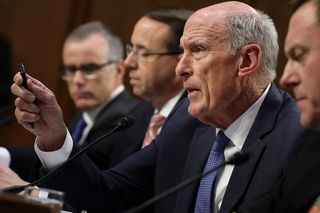
Strategic competitors like China and Russia are threatening American dominance in space by developing the ability to hold US space assets at risk.64 At the first meeting of the Trump administration’s National Space Council (NSC), an overarching theme in the discussion of civil and national security space was the United States’ declining margin of superiority. As Director of National Intelligence Dan Coats stated: “There is a dark side to this [increased space activity] that forces us to be prepared… [The Council must] ensure we achieve the dominance in space necessary to protect our people.”65 Indeed, there is broad agreement in the US national security community — including in official documents published by the NSC, the Pentagon and the intelligence community — that America’s superiority in space is slipping.66 Addressing the National Space Council earlier this year, Vice President Mike Pence stated that China and Russia “are considering attacks against satellite systems as part of their future warfare doctrine”.67 While this language has been used behind closed doors since at least 2007, when China demonstrated its anti-satellite capabilities for the first time, it has now filtered up to the highest levels of government.
Despite these threats to its space assets, the United States will continue to rely heavily on space for national security. Indeed, most of its intelligence and warfighting practices are space-enabled: the pin-point positioning of GPS that guides munitions to precise targets; the unrivalled intelligence of imaging satellites; the persistent early warning of missile launch from infra-red satellites; and the mobile communications that give front-line warfighters access to tactical support. These advantages are deeply entrenched in the American way of war, too valuable to give up and too capable to easily substitute. The satellites that deliver these space advantages, however, are fragile. They are mostly built to be light-weight, under-budget, and “postured in ways that largely presumed their safety or sanctuary from attack”.68 In today’s world these satellites are vulnerable to reversible threats like jamming, blinding and cyber-attack, as well as irreversible threats such as kinetic missile attacks, nuclear strikes and deliberate collision.69
Prudent strategic and operational planning can help to protect these fragile assets or reduce America’s reliance upon them.70 This includes: diversifying space assets across multiple countries, shortening development times for space missions, strengthening international laws and norms around space activities and conflict, and monitoring space constantly from multiple geographies. To meet this challenge, US officials are becoming increasingly frank about the need for collaboration and burden sharing with allies and trusted partners. For example, General John Raymond, head of Air Force Space Command, recently advocated expanded cooperation with allies in the space domain and equipping them with “a full range of capabilities”.71 This theme was reiterated at the first meeting of the new National Space Council in 2017.72
For a country that has previously resisted the need to rely on allies in space, this is a striking development.
Increased space cooperation between Australia and the United States
Australia and the United States face a confluence of interests in space that will allow both countries to expand cooperation beyond national security and into the civil and commercial arenas. At a time when Canberra needs help developing its civil space program and commercial industry, Australia’s closest ally and the globe’s preeminent space power is looking for allies and partners to become more space capable. Establishing an Australian commercial space industry will require Australian companies to tap the international space industry for customers, government-sponsored projects, venture capital and experience. These requirements can be met through improved bilateral arrangements with the United States, joint-projects in the civil space sector, and a comprehensive Australian strategy for cooperation with the United States in space. For Washington, Australia’s geography, its support for a rules-based order in space, and its small set of niche space capabilities make it an attractive partner in burden sharing.
The Australian perspective: Cooperation the key to growth
Cooperation with other countries in space will be crucial for Australia and its burgeoning space industry. All space programs follow this approach to a certain degree. One example of narrowly-focused cooperation with a clear quid-pro-quo was Nigeria’s agreements with UK manufacturer SSTL for a series of satellites and associated technology transfer.73 Other countries have sought longer-term relationships. The United Kingdom has successfully used its membership of the European Space Agency to access a broader pool of space experience and used it as a market for British companies, with 49 per cent of UK space export dollars originating from Europe.74 Similarly, Canada has leveraged its close relationship with the United States and its associate membership of the European Space Agency75 to develop globally-valuable space expertise in radar satellites and in-space robotics without developing a full-spectrum space industry.76
At a time when Canberra needs help developing its civil space program and commercial industry, Australia’s closest ally and theglobe’s preeminent space power is looking for allies and partners to become more space capable.
For Australia, the United States can provide a significant advantage in access to expertise and experience for its nascent space industry. The United States has a large and diverse space workforce, and long years of experience in both commercial and civil space sectors. Space activities are unforgiving of technical failures as space missions are difficult to repair, and platforms and systems require an extremely high degree of quality control. Australia lacks recent experience operating in the space domain. Closer cooperation with the United States can raise Australian skills through civil personnel exchanges, or participation of Australian industry or universities in joint projects.
Australia also needs markets — i.e. customers — to build a successful commercial space industry. The United States is the largest space market globally, with significant recent growth in the commercial space sector. Canberra should therefore focus on building greater market access for Australian companies in the US space sector. Further discussions with Washington could concentrate on providing Australian companies with a “ticket to play” for otherwise closed calls for government tenders, potentially starting with small projects like the small satellites sought by the US defence innovation organisation DIUx.77 These discussions should also encompass export control barriers on space industrial products, common in dual-use technologies and industry.
Finally, Australia will need capital to bridge the gap between experienced minds and an export-ready capability. Historically, capital for space projects was hard to find, although it has improved in recent years. The United States is a wellspring of space capital, with “investors in space companies… primarily headquartered in the United States, representing about 60 per cent of the total space investment”.78 In 2015-2016 alone, about US$1.5 billion was invested by US firms or in US space activities.79 Australia has a small venture capital market compared to the United States (~$1 billion vs ~$35 billion),80 and less experience investing in space ventures.81 Bilateral Australia-US foreign investment pathways are already high,82 which allows the space industry to take advantage of existing economic cooperation through support networks such as the Australian Trade and Investment Commission’s “Landing Pads” and CSIRO’s Silicon Valley office, designed to “give Australian entrepreneurs direct access to the US technology hub and funding opportunities”.83
The types of space industry expertise and projects that Australia is likely to pursue — namely, space situational awareness and satellite imagery applications — make focusing on the United States as a partner a sensible approach. In space situational awareness, the United States is already a significant partner for Australia’s burgeoning industry as it possesses many of the sensors, coordination hubs84 and satellite operators who will benefit from the service and become end-user customers.85 Further development of Australian expertise in earth observation will benefit from closer partnership with the United States, which leads in many of the most important capability areas: it has high resolution satellites (such as those from Digital Globe), rapid revisit satellites (such as those of Planet), extensive archives of public good data (such as Landsat), and the computing talent and infrastructure to make sense of the information in its Silicon Valley tech hubs.
A strong Australian space sector is an advantage for Washington
For Washington, robust civil space programs among its allies and trusted partners are crucial if it seeks to maintain its strategic advantages in space. A strong civil space program in an allied country like Australia can help mitigate vulnerabilities in US space systems, extend the reach of US and allied projects by providing better space situational awareness and diversifying the ground and in-space segments of intelligence capabilities. Coordination among the United States and its allies in helping to build international consensus regarding responsible uses of space would also advance shared, rules-based order objectives. Finally, civil space programs in allied countries will help build an extended innovation ecosystem that feeds into both civil and national security space systems.
As former acting NASA Administrator Robert M. Lightfoot Jr. stated, “NASA is called to refocus existing activities towards exploration”, providing an opportunity for partners like Australia to extend the impact of deprioritised missions with the addition of extra resources and niche capabilities.
A dynamic Australian space program will advance this agenda. Australian projects sponsored through its civil space program could help provide better space situational awareness, leveraging Australia’s unique geography and existing facilities, as well as broadening international participation. Increased SSA will aid efforts to build an effective space traffic management regime, which, in turn, can help to reduce risk to military and intelligence satellites.86 Australia could also diversify the ground and in-space segments of information gathering capabilities of the Five Eyes intelligence network by building low cost, limited capability earth observation satellites. These could usefully diversify the observation assets of Five Eyes countries in the event of a limited space conflict where some but not all US satellites were rendered inoperative.87
Canberra could also help to establish international agreement on safe and responsible space behaviour, an area in which Australia has been a leader in the past. This may involve efforts to help socialise other countries to emerging practices on responsible space behaviour, as it did in the past with the “Code of Conduct” for space activities.88 Looking to future projects, advances in dual-use technology mean military and intelligence applications will increasingly originate in the commercial sector, meaning that a strong Australian space innovation ecosystem would be in America’s interests.89
A strong Australian space sector would also provide useful inputs into America’s civil space domain. For instance, as US budgets for earth observation and space science face pressure, Australia may have a larger role to play.90 As former acting NASA Administrator Robert M. Lightfoot Jr. stated, “NASA is called to refocus existing activities towards exploration”,91 providing an opportunity for partners like Australia to extend the impact of deprioritised missions with the addition of extra resources and niche capabilities. Geoscience Australia, CSIRO and the Bureau of Meteorology have all provided in-kind contributions to global satellite missions, including vital ground support in data downlink, calibration, data packaging and distribution. A recent example of this partnership and innovation involved Geoscience Australia creating a cloud-based, searchable archive of historical imagery for the US Landsat series.92 A global first led by Australia, this archive model is now being implemented in other regions, extending the reach and impact of the US Landsat satellites.
Existing cooperative activities
Australia and the United States share a long history of cooperation in space, most famously with Australian tracking stations involved in the Apollo missions and “relay[ing] to the world the first television images of Neil Armstrong’s historic first steps on the Moon”.93 This cooperation is built on a robust foundation of civil government-to-government agreements. The most high profile is the treaty level agreement between NASA and CSIRO for the operation of the Canberra Deep Space Communications Complex at Tidbinbilla and other tracking facilities. There are also agreements between Geoscience Australia and the United States Geological Survey for the use of ground facilities and access to satellite data.94 The Bureau of Meteorology has also signed agreements with NOAA for cooperative activities.95 More generally, Australia and the United States have a Scientific and Technical Cooperation Agreement,96 which streamlines scientific cooperation by providing a framework for data exchange and intellectual property protection on cooperative projects between the two countries.
There are also a range of national security arrangements. The 2010 AUSMIN conference produced a joint statement on space security and an Australia — United States Space Situational Awareness Partnership.97 The AUSMIN communique highlighted the operational arrangements which exist “in the form of personnel exchanges and regular discussions on policy and intelligence”.98 The joint facilities, of which Pine Gap is the most prominent, also have a set of implementing agreements, which enable cost-sharing and operational details. Additionally, Australia has recently been incorporated into the US National Defence and Technology Industrial Base, which brings with it improved access to US national security markets and a faster route for cooperation on sensitive technologies.99
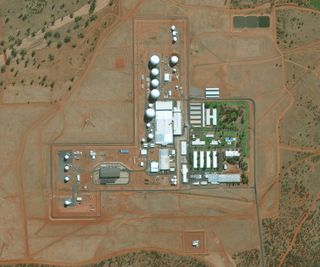
These government-to-government arrangements do not stand alone. There is substantial ongoing cooperation in industry and academia. For example, US entities participate in cooperative research efforts, like the Space Environment Research Centre, where Lockheed Martin and the University of Arizona are key collaborators. The University of Queensland Centre for Hypersonics partners with Boeing, Caltech and NASA. The Australian Centre for Astrobiology at the University of New South Wales has strong links with NASA and is one of only two Associate Members of the NASA Astrobiology Institute globally.100
Challenges to closer cooperation
Although there are strong reasons for the United States and Australia to expand cooperation in space, significant hurdles to industrial cooperation exist. There are also potential geostrategic risks for Australia in tying its civil space development too closely to the United States.
Australia should be conscious of the risks in linking its civil space development too closely with the national security concerns of either Canberra or Washington. As the level of military and intelligence cooperation between the two countries dwarfs that of civil space cooperation, there is a risk that national security projects may envelop the funding and prioritisation that a developing Australian space industry requires. For instance, elements of the Australian national security community have privately expressed scepticism about a civil space agency and fear it might divert funding from national security priorities.101 Bureaucratic competition for limited funding in Australia may cause promising civilian projects to be cancelled if they are seen to be competing for funds in the national security space or vice versa. An additional risk is that civilian space projects are not given sufficient attention when US and Australian officials meet because the existing channels for space discussion are primarily defence related. The right way for Australia’s civil and national security space to progress is as two complementary but independent fields, rather than duplicative or zero-sum.
A further challenge is cultural. Space industry growth is being driven by organisations that have ignored traditionally large government budgets for space development and, instead, adopted a more rapid and innovative approach. Although the United States is the birthplace of many of these cutting-edge companies, it is also home to large-budget government organisations like NASA, which are struggling to adapt to the opportunities presented by this shift. For instance, contrast SpaceX’s recent catalogue of achievements — including an unprecedented booster fly-back — with NASA’s ongoing struggle to develop a human-carrying launch vehicle to replace the Space Shuttle. Australia must avoid being influenced to take a big-budget approach like its US government counterparts, and instead concentrate on the innovative actors within the US space sector. This cultural challenge will be exacerbated by the United States’ tendency to set the rules and requirements for joint space projects with allies. While expected and justifiable on projects where the United States is the major contributor, this culture adds to the risk that Australia will be a partner without influence in projects that do not directly meet its space goals.
A more technical hurdle is the United States’ stringent export control restrictions, which add friction to commercial cooperation even among close allies. In the past, efforts102 have been made to streamline trade and development in sensitive dual-use technologies, and some exemptions to US International Traffic in Arms Regulations (ITAR) for Australia have been achieved.103 But these exemptions only apply to specific, agreed-upon projects, and the remaining restrictions continue to be burdensome. In the last 12 months, these restrictions have prevented US speakers talking at Australian events,104 made Australian companies wary of integrating products into US space systems for fear that their products would fall under stringent US export-controls, and have been used as an argument for why Australia should join the European Space Agency as an associate member.105 There is growing recognition in the United States that ITAR export controls are limiting necessary cooperation, with the US National Space Council recently recommending a review into export controls to be delivered in early 2019.106 Closer cooperation will require finding expedited ways to deal with export controls on an ongoing basis.
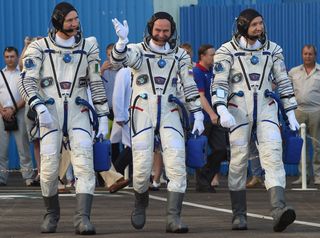
Linking Australia’s civil space program so closely with the United States may exacerbate the strategic challenge of balancing a closer Australia-United States relationship with Australia’s relations with China. As with the United States, space is growing in strategic importance for China, pushing Beijing to invest heavily in space development.107 Strengthening Australia-US security cooperation in space amid growing strategic tensions between the United States and China may cause Canberra to worry about becoming ‘entrapped’ in a conflict in new ways.108 As an example, analysts have pointed to the potential for a US-China conflict over Taiwan, in which Australia’s policy would be one of ‘calculated ambiguity’.109 Yet, any major power war in the Taiwan Strait has a significant risk of escalating into the space domain, primarily through emerging capabilities such as cyber or electronic attacks on space-enabled communication and command networks. Given the interconnectedness between civil and national security systems, and Australia’s dependence on US space assets, Canberra may find itself at risk of being drawn into a conflict.
Although further integrated space systems between the United States and Australia may lead to concerns of entrapment, closer Australia-US civil space collaboration is not likely to adversely affect Australia’s diplomatic relationship with China. Indeed, the long history of significant national security cooperation between the United States and Australia in space has not prevented Canberra from building a number of civil space connections with Beijing, such as CSIRO’s collaboration with Chinese companies on the Square Kilometre Array.110 These civil space partnerships are already subject to informal national security checks by Australia and are likely to continue to the benefit of both countries.
Moreover, there may be scope for Australia to work alongside both major powers in space. Practical data sharing between the United States and China on issues like space object tracking is critical to a safe space environment, and channels for sharing this information are limited but improving.111 One role for an Australian space agency could be to act as an intermediary in holding and disseminating this data in an open and transparent way.112 More controversially, some in the United States civil space program would like to do more with Beijing in scientific space exploration, given that China is one of the few countries with funds for space exploration and a willingness to invest.113 Former NASA Administrator Charlie Bolden made efforts early in his term to engage China,114 but Congress has imposed broad restrictions on US entities working with China on space projects.115 This may be a missed opportunity. Even at the height of the Cold War there was symbolic space cooperation between the United States and the Soviet Union, such as the joint Apollo-Soyuz mission,116 that sought to foster trust and people-to-people links. Although recent shifts in US national security and defence strategy will present challenges,117 Australia could engage the United States and China in a way that would be valuable to all three nations, provided that Australia develops the space credibility to be a respected intermediary.
A comprehensive plan for long-term US-Australia space cooperation
Under almost any scenario, Australia will continue to cooperate with the United States in space. The key question is how to maximise the potential of that relationship for mutual benefit. Glaringly, Australia has no long-term international space engagement strategy with any country, including the United States. Individual agencies like Geoscience Australia and the Bureau of Meteorology work to secure access to particular international satellites, but longer-term questions of capability development and market access are ignored. One of the first tasks for the Australian space agency should be to develop such a plan.
That plan should focus on long-term developments that utilise comparative advantages in both countries. In addition to the agency-to-agency cooperation that currently exists, the United States and Australia should agree on a set of overarching principles and projects from a whole-of-government perspective. Such an agreement would enable more extensive cooperation by balancing the differently weighted contributions currently made by individual agencies. For example, Australia is well positioned to be a significant partner with the State Department on diplomatic efforts to improve ‘rules of the road’ for space activities,118 as it did through attempts to help gain international agreement for the European Union’s ‘code of conduct’ for space. At the same time, Australia needs more support in the short-term from the deep experience of organisations like NASA than it can necessarily deliver back. In practical terms, establishing a dialogue that involves both civil and national security actors from all relevant organisations in Australia and the United States would be a useful starting point, and could be initiated through discussions at annual AUSMIN talks.
Establishing a dialogue that involves both civil and national security actors from all relevant organisations in Australia and the United States would be a useful starting point, and could be initiated through discussions at annual AUSMIN talks.
Equally important for Australia is to improve the relationship between civil, commercial and defence space efforts. An obvious starting point is to strengthen coordination and communication within government so that Australia’s new civil space agency operates in a relationship of mutual respect with Defence, rather than in isolation. Structures such as the Australian Government Space Coordination Committee119 have developed the bureaucratic foundations for such coordination, but more is required. In terms of structure, coordination with Defence could be strengthened in the longer term by having the new civil agency report to a minister who sits on the national security committee of Cabinet. In terms of personnel, the head of the new space agency, Dr Megan Clark, should have a mandate to participate in interagency discussions with Defence on an equal footing. The agency itself should be staffed by a small but highly qualified pool of people with space experience and security clearances to facilitate mutually productive conversations between civil and national security space.
As the new space agency develops its strategy, it should focus on investing and building commercial opportunities, but also seek to lay the foundations for longer-term projects. The commercial emphasis seen in recent statements from Liberal and Labor politicians about Australian space120 is the right direction for Australia. However, it should be tempered slightly by having a small percentage of the agency focus on particular elements of scientific, human or robotic spaceflight programs. The reason for this is twofold. First, these longer-term projects allow Australia to offer something towards the human spaceflight and exploration goals that are a focus for many US politicians, and could serve as an entry ticket for broader Australian cooperation with NASA. Second, and potentially more importantly, carefully choosing focus areas in these longer-term programs could allow Australian industry to develop technologies that may become commercialised in coming decades. For example, participating in robotic lunar missions now may allow Australian companies to prototype technologies for in-space mining or manufacturing that could prove useful in the future.
There is no shortage of future opportunities for Australia to develop independent, world-class capabilities if planned strategically. Australia could build on world-leading mining and remote operations infrastructure to develop autonomous robotics, focused on resource extraction, on-orbit refuelling or autonomous repair. Equally, Australia’s strong biomedical industry, which recently benefited from a half-billion dollar government investment,121 could be tapped to develop applications for space exploration, but with an eye to the potentially larger market of space tourism should it eventuate. Satellite imagery application is a third growth area where Australia has globally-recognised capabilities122 that could be combined with existing computational strengths123 to develop export-grade niche capabilities in, for example, on-orbit image processing or more autonomous imagery satellites.
Mapping the Third Offset: Australia, the United States and future war in the Indo-Pacific
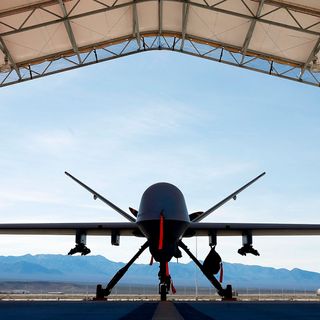
There will be consequences for a failure to plan as well. Australia’s ‘seat at the table’ in space discussions has historically relied on Australian ground stations providing mission critical services that were difficult to substitute. Technological changes — such as optical communications to higher orbits124 and on-board processing systems — have made a ground station component less critical for some applications. Increased automation raises the possibility that Australia’s existing space role as a provider of ground stations could become little more than that of a ‘landlord’, as other countries operate Australia-based ground stations remotely from control rooms in their own country. Furthermore, the increasing availability of space technology means there are now more countries in the Indo-Pacific that could provide similar quality ground stations for some applications.
Policy recommendations
Selecting projects for further US-Australia cooperation in space is an ideal role for the new space agency. It would involve soliciting ideas from industry, academia and government, prioritising them and beginning implementation. The following are five recommended projects for furthering US-Australia cooperation in space, which take into account the goal of building an Australian space industry, the strategic goals of the United States and the nature of existing cooperation:
1. Establish a Joint Innovation Centre with a focus on space using existing organisations.
In the cyber and space domains, commercial innovation is racing ahead of the traditional defence sector while defence procurement is inventing new models to keep up. Examples of national defence innovation centres abound throughout the Five-Eyes: the United States has DIUx, the United Kingdom has the Defence and Security Accelerator,125 and in Canada the Innovation for Defence Excellence and Security program (IDEaS)126 has been established. These programs, however, are not formally connected despite working on ideas of common interest. Australia could pilot an approach in the space domain to bring together these facilities to work on pressing space issues.127 For the United States, this would introduce new avenues of innovation and new ideas. It would allow piloting of concepts outside the complexity of US acquisition regulations and vested industrial interests. For Australia, it would give companies participating in the innovation centres a new level of access and credibility in larger markets.
2. Joint Space Situational Awareness network development.
The co-development of more advanced space situational awareness (SSA) capabilities could be a flagship Australia-US space project. Such a project would likely have both a national security and a civil dimension, and would build on the 2010 AUSMIN agreement on SSA assets.128 The national security component would see Australia construct additional radar or optical SSA sensors in particular locations across Australia, potentially extending across the South Pacific. This would increase the resolution of existing SSA activities and improve early warning of belligerent activity or threatening debris. As part of this exercise, Australia would need to develop sharing protocols with the United States to ensure that the data provided was interoperable.
The civilian and commercial component would use those sensors to provide additional information for commercial SSA. One commercial model may be simply charging for the provision of Australian data, or in a more sophisticated version, could involve Australian companies providing additional services to spacecraft operators, including conjunction analysis, orbit correction and potential relocation of debris. Australian involvement would help with transparency and global information sharing by helping transform US-centric efforts into global ones.129
3. Demonstrate capability through a competitive small satellite launch.
A challenge for the Australian government will be to support innovative small space companies without making them chronically dependent on government funding. One policy tool could be for the Australian government to block buy or barter for a series of small satellite slots on US launch vehicles, spaced over several years, and run a competitive selection process to award these launch slots to Australian companies with the best small satellite business cases. This will allow companies to take their technologies from ‘lab-proven’ to ‘space-proven’. In the short term, this raises the value of the companies and increases their ability to attract customers and capital, without making them dependent on ongoing government funding. In the longer term, a series of launches would lower barriers to entry for potential space companies and increase the credibility of the Australian space industry by demonstrating successful missions. The Australian government would likely drive costs down by purchasing in bulk, and could use the eligibility criteria for these launches to focus areas of commercialisation. Payloads could be selected in consultation with the United States.
4. Better coordinated ground station hosting.
Australia has long been a location of choice for ground stations offering command and control and downlink of satellite data services. Lately, however, contention around spectrum allocation and physical location has made it more difficult for foreign partners to install ground facilities. Australia could set up a more streamlined approach to international cooperative arrangements for ground stations. US agencies or corporations could be anchor tenants in those arrangements, underpinning the facility and encouraging free and open sharing of public good satellite information. Australia could develop and publicise a stated policy on the requirements for ground station access, including access to raw data feeds and embedded personnel. The Australian Communications and Media Authority undertook initial work on this concept in its 2011 “Earth Station Siting” paper,130 although no significant changes to major ground facilities appear to have occurred to date.
5. Space security and rule development.
The development of ‘rules of the road’ for space activities is a critical gap in global space efforts, and one which the United States is unable to address alone because it requires concerted diplomatic effort on multiple fronts. Rules would more clearly outline standards of behaviour so that the space environment becomes a less risky place to operate, increase transparency on actions in space, and reduce the chances of misinterpretation of events that lead to conflict. Australia could take a leading role in formulating and socialising best practices for space activities, particularly in the Indo-Pacific in close cooperation with Japan, the United States and India.131 Such an effort would tie in with the SSA focus mentioned above or build on existing work at the University of Adelaide on military law in space.132 Australia could do this in close cooperation with likeminded countries to develop a growing consensus; a role Canberra has played before in previous efforts to establish rules of international behaviour in space.133
Conclusion
The space sector is experiencing a period of rapid change. New actors, new industries and new technologies are changing the way space is accessed and used. As Australia looks to take advantage of this change and develop its own civil space program, its closest ally and the globe’s preeminent space power is looking for allies to share the space burden and become more space capable themselves. To maximise the value from the US-Australia space relationship, Australia should ensure that its civil and national security space communities can work closely together, consider projects that will help build-out Australia’s domestic space industry and align where possible with US strategic goals. Working with US industry and the government-led space sector will assist Australia to strengthen its burgeoning civil and national security space sectors.




.jpg?rect=0,80,3000,1989&fp-x=0.5&fp-y=0.44772296905517583&w=320&h=212&fit=crop&crop=focalpoint&auto=format)
